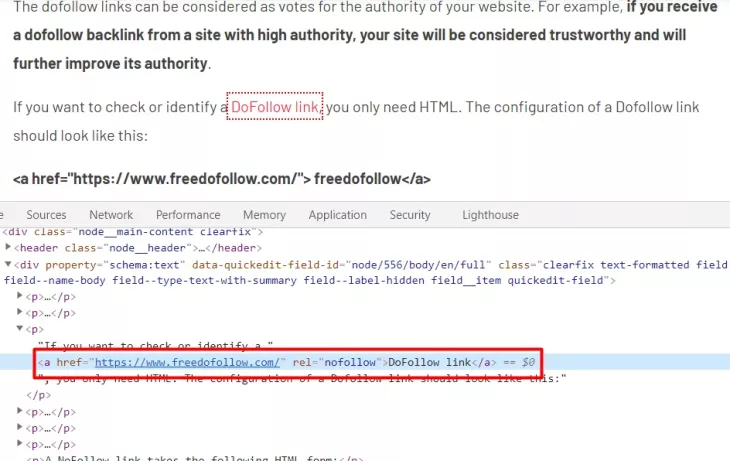The DoFollow link term was introduced by Google in 2015 to reduce search engine spam and improve the list of results. DoFollow links allow search engines and people to reach a website.
The dofollow links can be considered as votes for the authority of your website. For example, if you receive a dofollow backlink from a site with high authority, your site will be considered trustworthy and will further improve its authority.
If you want to check or identify a DoFollow link, you only need HTML. The configuration of a Dofollow link should look like this:
<a href="https://www.freedofollow.com/"> freedofollow</a>
Many weblogs have NoFollow tags enabled, which means that search engines do not take into account the links they distribute when calculating authority. Disabling this tag will help the community of blogs and sites by improving their authority. Unfortunately, there is a downside to using dofollow links on your website: they attract spam comments. So you will spend more time removing spam comments from your blog.
A NoFollow link is the value of the "rel=" HTML tag used to instruct search engines that a hyperlink should not influence the authority of that page. In other words, a NoFollow tag suggests that search engines ignore links. Even if a nofollow link directs you to a site, the authority and position of that site will not be improved. The purpose of NoFollow links is to reduce spam and improve the quality of search engine results.
A NoFollow link takes the following HTML form:
<a href="https://www.freedofollow.com/" rel="nofollow"> Link Text </a>
When do I need to use a nofollow link? Well, it is recommended that you use the NoFollow links on your site for:
- paid links (so as not to be penalized by the search engine used)
comments (to keep spam at bay)
- content posted by users
- widgets
- images and infographics from other sites
- any site you link, but which you do not want to support.



























